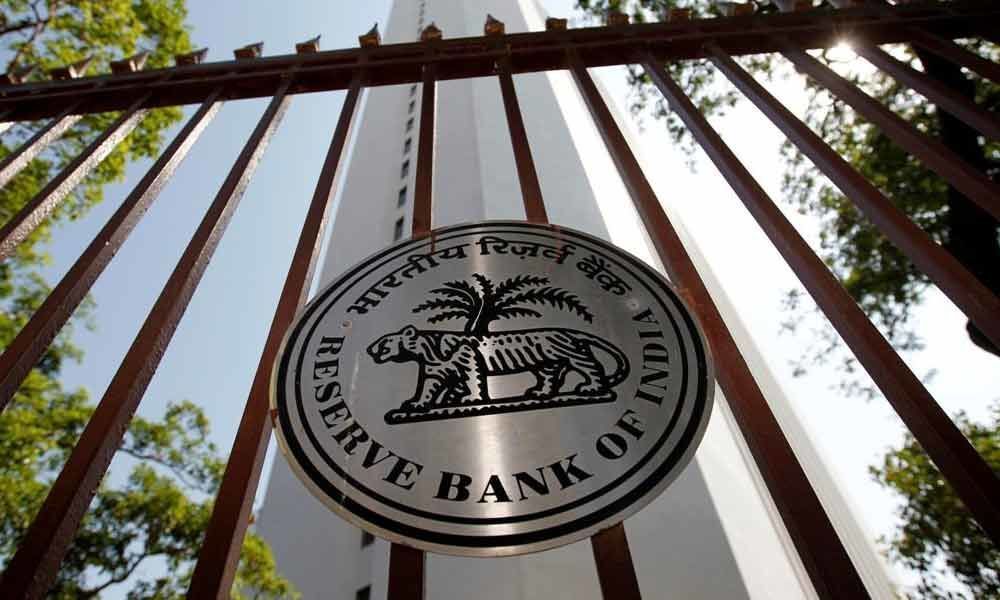Live
- Formula 1: Magnussen reflects on missed Ferrari and Red Bull chances
- Average affluent Indian managing over 434 peer-to-peer banking transactions annually
- Best Way to Eat Dry Fruits in Winter: Soaking vs. Roasting
- SC relief: Asaram Bapu gets interim bail on medical grounds, but will remain in jail
- Aloe Vera Juice: Unlocking Its Surprising Health Benefits
- Mandhana, Sutherland, Mlaba nominated for Women's Player of December
- Yunus government in Bangladesh set to acquit terrorist desperately wanted by US
- Drug trafficking cartel busted in Punjab, woman among four held
- Pakistan fined for slow over-rate in second Test vs South Africa
- Microsoft, SaaSBoomi to help create over 2 lakh job opportunities in India in next 5 years
Just In
What caused Reserve Bank of India to shift from convention on rate cut


The Reserve Bank of India had raised quite a few eyebrows when it announced an unconventional 35 basis points rate cut during its bi-monthly policy meet earlier this month.
Mumbai: The Reserve Bank of India had raised quite a few eyebrows when it announced an unconventional 35 basis points rate cut during its bi-monthly policy meet earlier this month.
RBI Governor Shaktikanta Das, according to the minutes of the meeting released on Wednesday, said that "the economy needs a larger push" and a reduction in the policy repo rate by conventional 25 bps will be inadequate.
Voting for a 35 basis points (bps) rate cut, Das said that "a policy rate adjustment of 25 bps or multiples thereof may not always be consistent with the evolving macroeconomic situation. Hence, at times it is apposite to calibrate the size of the conventional rate adjustment".
Noting that there was clear evidence of domestic demand slowing down further, he said that investment activity has been losing traction and the weakening of the global economy in the face of intensifying trade and geo-political tensions has severely impacted India's exports, which may further impact investment activity.
The Reserve Bank of India's (RBI) MPC voted by a 4:2 margin to cut its repo, or short-term lending rate for commercial banks, by an unprecedented 35 bps to 5.4 per cent.
Indicating future course of action, Michael Debabrata Patra, who was among the four who voted for a 35 bps cut, said that "from here on, the space for monetary policy action has to be calibrated to the evolving situation, especially as the nature and depth of the slowdown is still unravelling and elbow room may be needed if it deepens".
"A more broad-sided response involving all levers of policy acquires the highest priority now. The overarching goal is to reinvigorate domestic demand and the time to do it is now," Patra added.
Ravindra H. Dholakia had expressed that he would like to cut the policy rate by 40 bps, "but I do not mind going with majority opinion of cutting the rate by 35 bps this time, and maintaining the accommodative stance".
Voting for a 25 bps, external MPC member Chetan Ghate had said that by agreeing to a 35 bps cut, the RBI could be burning through monetary policy space.
Opposing the four MPC members who voted for a 35 bps cut, he said that there has been inadequate monetary transmission given the quantum of past rate cuts.
"..the WALR (weighted average lending rate) on fresh rupee loans in the banking system has come down by only 29 bps despite the MPC cutting rates by 75 bps in the February-June window. By a large cut (35 bps), I feel we will be burning through monetary policy space without much to show for it," Ghate said, according to the minutes.
"While the real economy needs some support, we should wait for more transmission to happen," he added.
External member Pami Dua, who also recommended a 25 basis point cut, said that it was also important to recognize that, while monetary policy can impact cyclical factors, it has its "limitations with respect to significantly impacting structural factors".
According to Dua, investment-focused fiscal policy and active continuation of structural reforms were imperative at this juncture to complement the already substantial easing in central bank rates that have been delivered since February 2019.
The rate cut earlier this month was the fourth in succession adding up to a total of 110 bps.

© 2024 Hyderabad Media House Limited/The Hans India. All rights reserved. Powered by hocalwire.com






